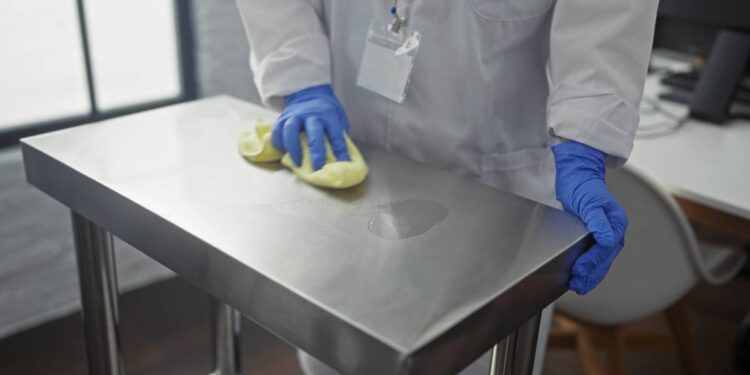Laboratory safety depends on meticulous attention to detail, yet many facilities focus primarily on obvious contamination points while overlooking critical surfaces that harbor pathogens and chemical residues.
Healthcare professionals understand that effective laboratory hygiene extends far beyond wiping down benchtops and disposing of sharps. Hidden contamination sites can compromise experimental integrity, endanger personnel, and create liability issues. Don’t neglect these surfaces in your lab cleaning process if you intend to maintain compliance and ethics.
Fume Hoods Require Specialized Decontamination
Chemical vapors and particulates accumulate within fume hood chambers, creating invisible contamination layers that standard cleaning methods cannot address. Interior surfaces collect microscopic residues from volatile compounds, requiring specialized solvents and extended contact times for complete removal.
Begin decontamination by removing all equipment and materials from the chamber. Apply appropriate chemical-specific cleaning agents to interior walls, working from top to bottom to prevent recontamination of cleaned surfaces. Pay particular attention to airflow baffles and sash tracks where residues concentrate. Monthly deep cleaning should include dismantling removable components for thorough sanitization.
Equipment Control Panels Harbor Persistent Contamination
Digital interfaces and control mechanisms create ideal conditions for pathogen survival due to frequent handling and irregular cleaning schedules. Textured surfaces, crevices around buttons, and touchscreen interfaces trap biological materials that resist standard disinfection methods.
Select compatible disinfectants that won’t damage sensitive electronic components while maintaining efficacy against target pathogens. Apply solutions using lint-free cloths rather than spray bottles to prevent moisture infiltration into electrical systems. Allow adequate contact time before wiping surfaces dry to ensure appropriate pathogen elimination.
Storage Areas Accumulate Hidden Contamination
Shelving units, cabinet interiors, and storage compartments often escape routine cleaning attention despite constant exposure to airborne contaminants and spillage events. These areas develop biofilm formation over time, creating persistent contamination sources that compromise stored materials.
Empty storage areas completely before beginning decontamination procedures. Clean all surfaces with appropriate antimicrobial solutions, ensuring complete coverage of vertical and horizontal planes. Inspect for signs of moisture accumulation or pest activity that could indicate systematic contamination issues.
Sinks and Drains Present Unique Challenges
Plumbing systems create complex contamination pathways that extend beyond visible surfaces. Biofilm development within drain systems can release pathogens into laboratory air through aerosol generation during routine use.
Chemical compatibility becomes critical when selecting drain cleaning products, as incompatible mixtures create hazardous reactions or damage plumbing infrastructure. Establish protocols that address biological and chemical contamination without compromising facility systems.
To learn more about lab disinfection protocols specific to your facility type, consult with infection control specialists who design customized cleaning regimens based on your specific risk profile and regulatory requirements.
Comprehensive laboratory cleaning requires systematic attention to easily overlooked surfaces that can compromise safety and accuracy. Healthcare professionals must recognize that effective contamination control extends beyond obvious contact points to include complex systems and hidden surfaces. Don’t ignore these surfaces in your lab cleaning processes.















